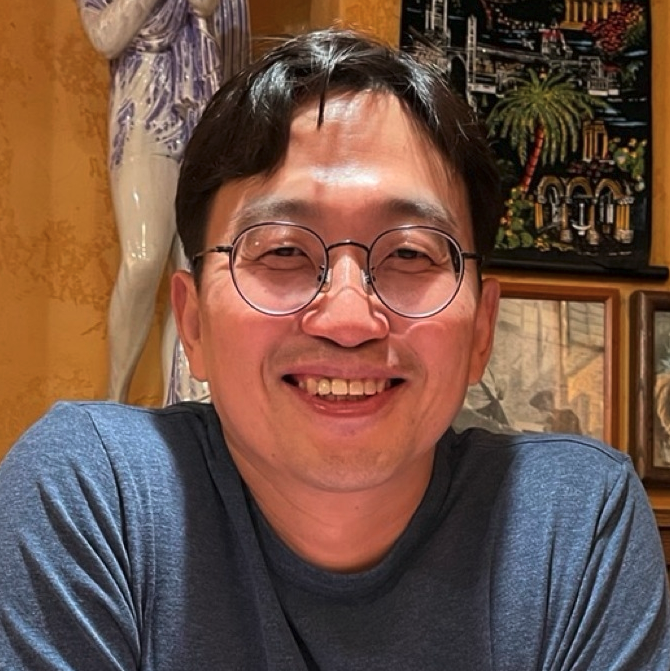When Mathematics Dances with Music - Reflections from Stanford
posted: 07-Oct-2025 & updated: 12-Oct-2025
Share on LinkedIn | Instagram | Twitter (X) | Facebook
Want to share this reflection? Use this link — https://sungheeyun.github.io/reflections/harmony-across-generations — to share!
The announcement page of this event can be found @ Harmony Across Generations - A Musical Journey Through Korean Heritage.
A local press release - 춤추는 지휘자 백윤학 교수, 스탠포드에서 강연 열어 by SF Korean
… something profound about our community here in the Bay Area. This wasn’t just curiosity about a Korean cultural event or casual interest in classical music. The audience knew they were about to witness something rare – someone who could speak both the language of mathematics and the language of the soul.
… Here was someone demonstrating that the same mathematical truths I’ve explored in my work on inevitabilities manifest themselves in music as pure, undeniable beauty.
Yoonhak embodies this duality perfectly. Watching him explain how the harmonic series emerges from the physics of vibrating strings, then immediately pivot to demonstrating why this mathematical fact produces emotional consonance—this is someone who has genuinely integrated both modes of understanding.
… AI cannot touch our souls precisely because it lacks the integrated understanding that Yoonhak demonstrated—the ability to feel the mathematics and analyze the feeling simultaneously.
AI generates Podcasts
Video
Audios
The Unexpected Convergence
Standing in that Stanford lecture hall, surrounded by 120 attendees carefully selected from nearly 400 applicants, I couldn’t help but reflect on the strange and beautiful path that brought us here. Yoonhak and I had walked similar roads once—both at Seoul Science High School’s Mathematics Olympiad Club, both studying Electrical Engineering at Seoul National University. But while I ventured into Convex Optimization, semiconductors, AI, and eventually biotech through Stanford University, Samsung Electronics, Amazon.com, Inc., Gauss Labs, Inc., and Erudio Bio, Inc., he made what seemed like an impossible leap: from engineering to the Curtis Institute of Music, where he was accepted to both Curtis and Juilliard.
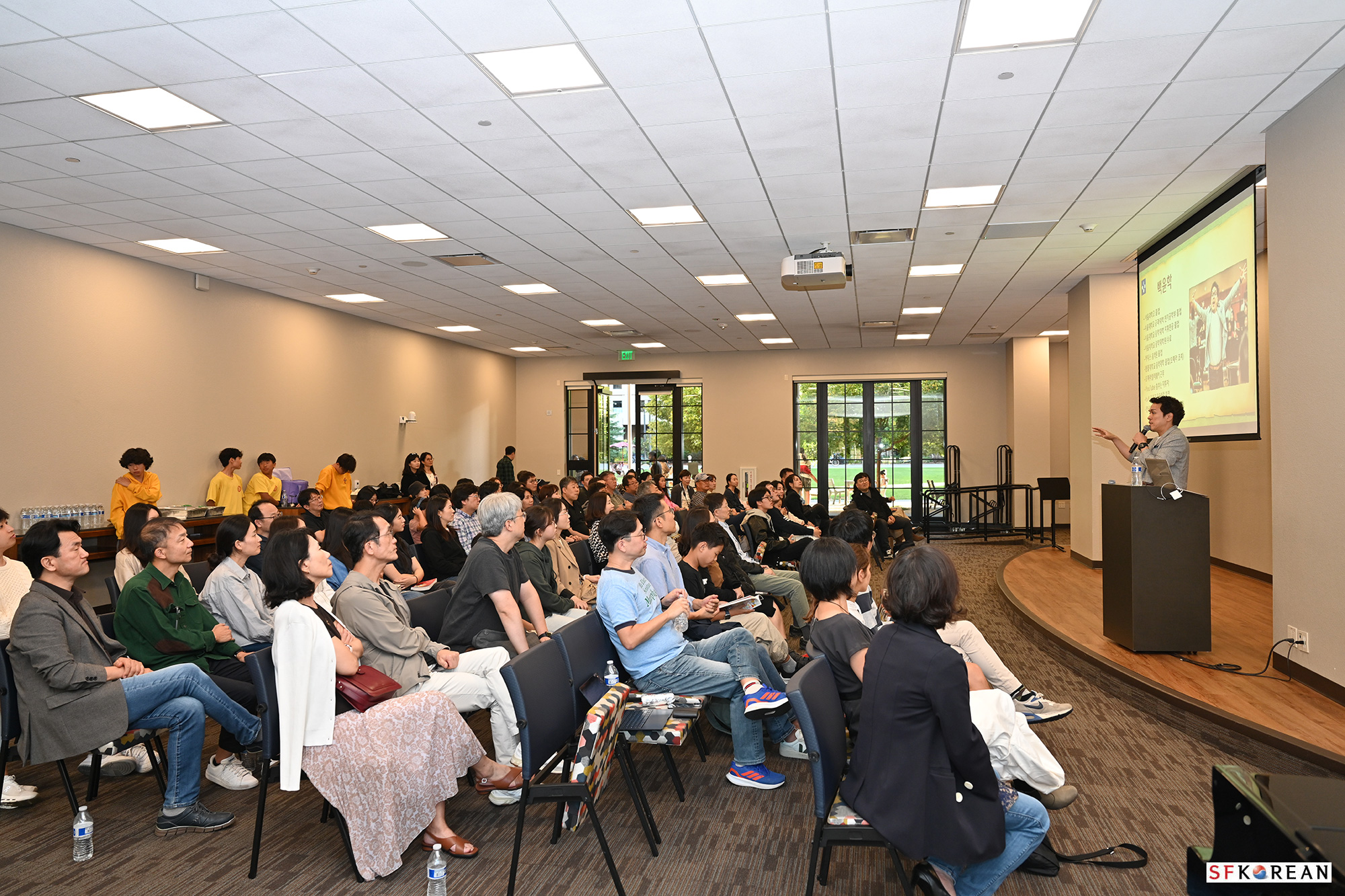
Twenty seven years later, here we were again, but the conversation had transformed entirely.
When 400 Become 120
The overwhelming response to this event—400 registrations for a 100-seat venue—told me something profound about our community here in the Bay Area. This wasn’t just curiosity about a Korean cultural event or casual interest in classical music. The audience knew they were about to witness something rare – someone who could speak both the language of mathematics and the language of the soul.
I felt genuinely apologetic that we couldn’t accommodate everyone. But perhaps that constraint itself created something special—an intimate gathering where deep ideas could breathe, where complex mathematics could dance with profound emotion, where Songpyeon and Korean refreshments could nourish both body and spirit during the reception.
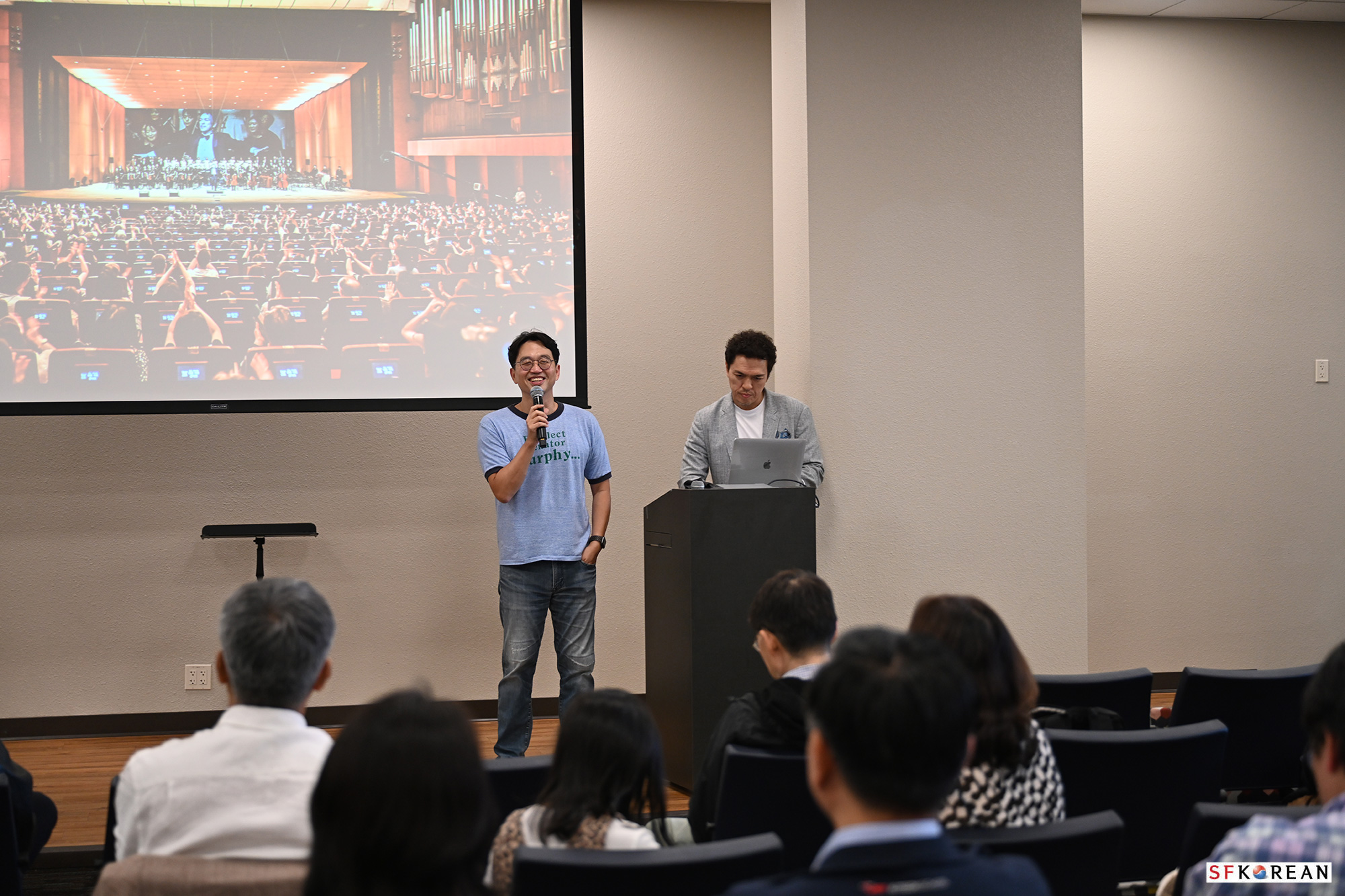
The Mathematics of Beauty
How can simple frequency ratios—numbers that any civilization capable of counting would inevitably discover—create experiences that move us to tears, that make us want to dance, that somehow touch something fundamental in the human spirit?
Watching Yoonhak explain overtones and harmonic series, I was struck by how perfectly his presentation bridged the two worlds I’ve spent my life exploring. Here was someone demonstrating that the same mathematical truths I’ve explored in my work on inevitabilities manifest themselves in music as pure, undeniable beauty.
The Pythagorean Discovery
When Yoonhak demonstrated how string length ratios create harmonious intervals, something clicked for the audience. This wasn’t abstract theory—this was the universe revealing its preferences. The 2:1 ratio gives us the octave, 3:2 gives us the perfect fifth, 4:3 the perfect fourth. These aren’t arbitrary human constructs; they’re mathematical inevitabilities that any intelligent beings anywhere in the universe would discover.
\[f_{\text{octave}} = 2f_0 \quad\quad f_{\text{fifth}} = \frac{3}{2}f_0 \quad\quad f_{\text{fourth}} = \frac{4}{3}f_0\]But here’s what made Yoonhak’s presentation transcend mere mathematics – he showed us that while the ratios are universal, what we do with them—how we arrange them, how we infuse them with meaning, how we use them to express the inexpressible—that’s purely, beautifully human.
Rich Overtones, Rich Lives
His explanation of overtones particularly resonated with me. “A good sound is a sound rich in overtones,” he said, demonstrating on the piano how a single note contains multitudes—the fundamental frequency plus all its harmonic companions vibrating in perfect mathematical ratios.
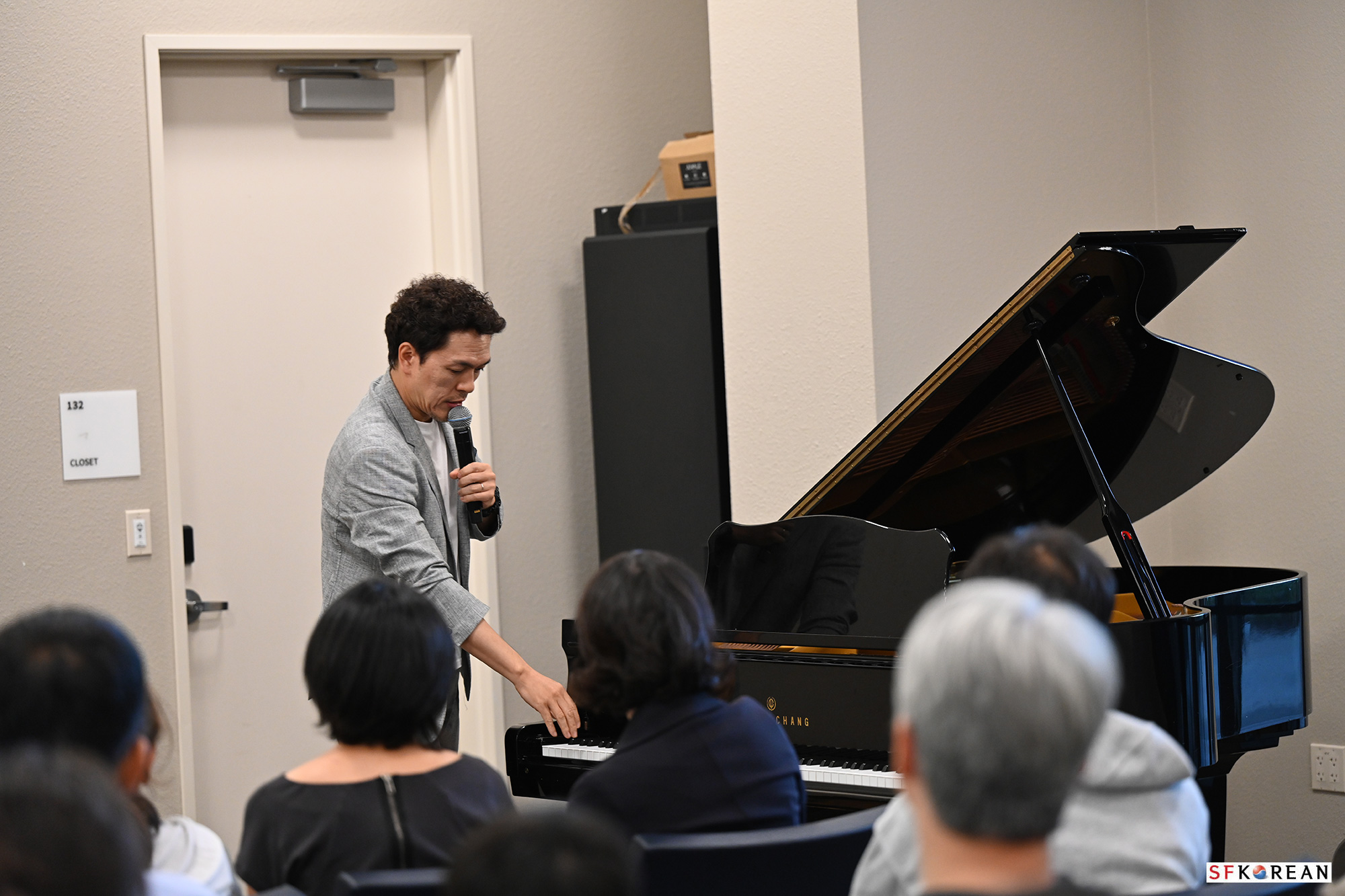
Isn’t this precisely what I was exploring in my essay on the dimensional paradox of music? How does one-dimensional acoustic phenomena—simple air pressure variations over time—create such infinite experiential richness? Yoonhak’s answer, delivered through both explanation and demonstration: because even the simplest musical tone is never truly simple. It’s a superposition of mathematical relationships, a chord unto itself, a universe of ratios resonating together.
The Path Only Silicon Valley Could Walk
Something struck me during the Q&A session that followed. The questions weren’t polite formalities or surface-level curiosities. They were penetrating. People asked about the mathematical implications of equal temperament versus just intonation. About the relationship between overtone series and chord progressions. About how Eastern and Western musical systems encode different mathematical and philosophical assumptions.
This audience got it. Really got it.
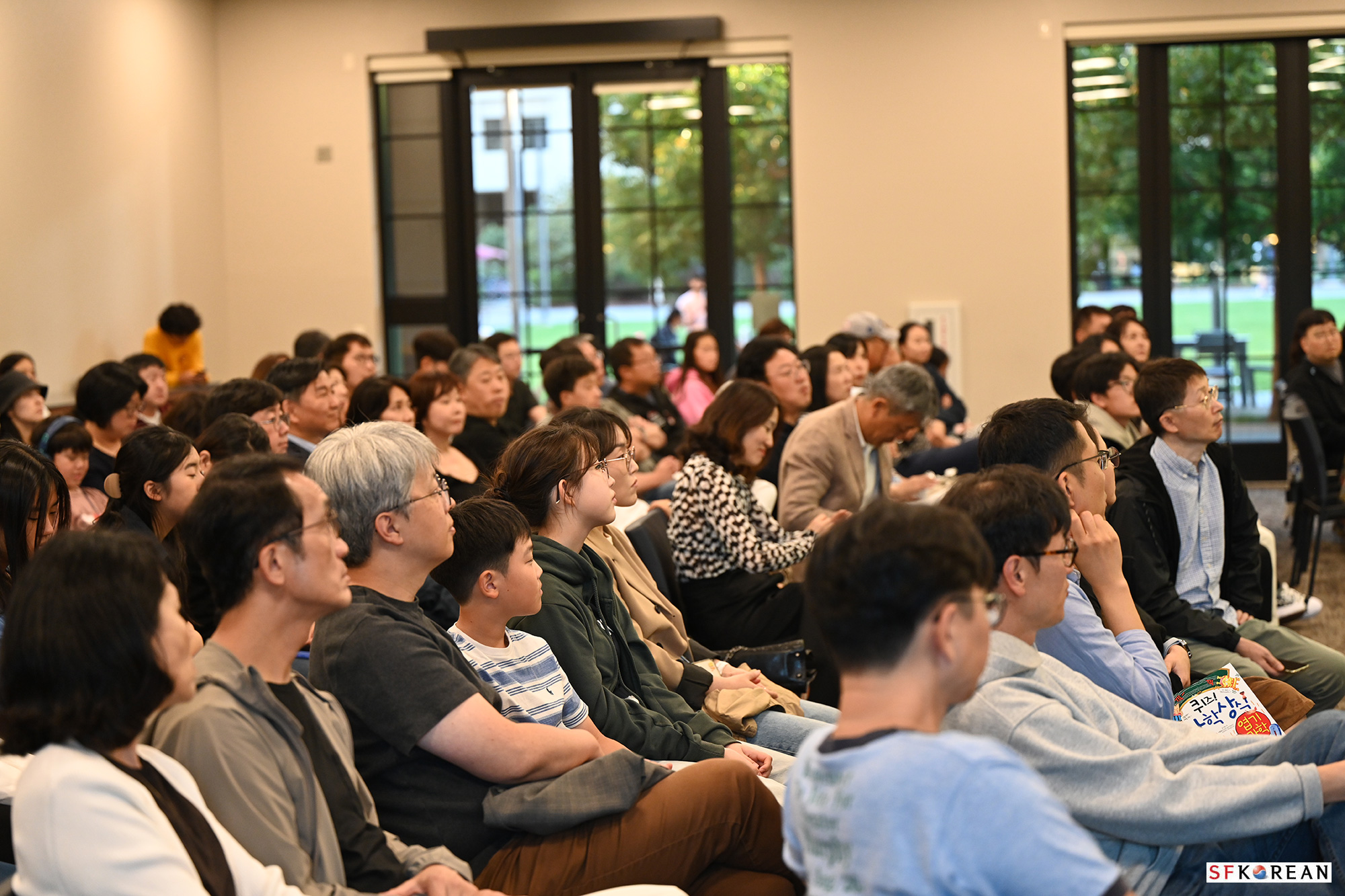
Where else but Silicon Valley could you gather 120 people who would not only follow but genuinely engage with a lecture that seamlessly wove together Fourier analysis, Pythagorean tuning, and the emotional architecture of Mozart? Where else would families bring their children to an event that demanded both intellectual rigor and emotional openness?
The Engineering Mind Meets the Musical Soul
I’ve spent my career moving between worlds—from semiconductor optimization to AI systems, from pure mathematics to philosophical inquiries into consciousness and meaning. I understand the peculiar blessing and curse of the technical mind that also craves beauty, that needs to understand why things move us, that can’t just experience emotion but must also analyze its structure.
Yoonhak embodies this duality perfectly. Watching him explain how the harmonic series emerges from the physics of vibrating strings, then immediately pivot to demonstrating why this mathematical fact produces emotional consonance—this is someone who has genuinely integrated both modes of understanding.
His path from Electrical Engineering to conducting represents something profound about human potential. We are not forced to choose between the analytical and the artistic, between understanding and feeling, between mathematics and meaning. The deepest truths lie in their integration.
The Question I Didn’t Ask
During the Q&A, I held back a question that had been forming throughout the lecture. I wanted to ask Yoonhak about the moment he decided to leave engineering. What was it like, abandoning one form of precision for another? Did the mathematical training help or hinder his musical development?
But I didn’t ask, because I realized I already knew the answer. Or rather, I knew there was no simple answer—only the complex, multidimensional truth that some questions are better lived than answered.
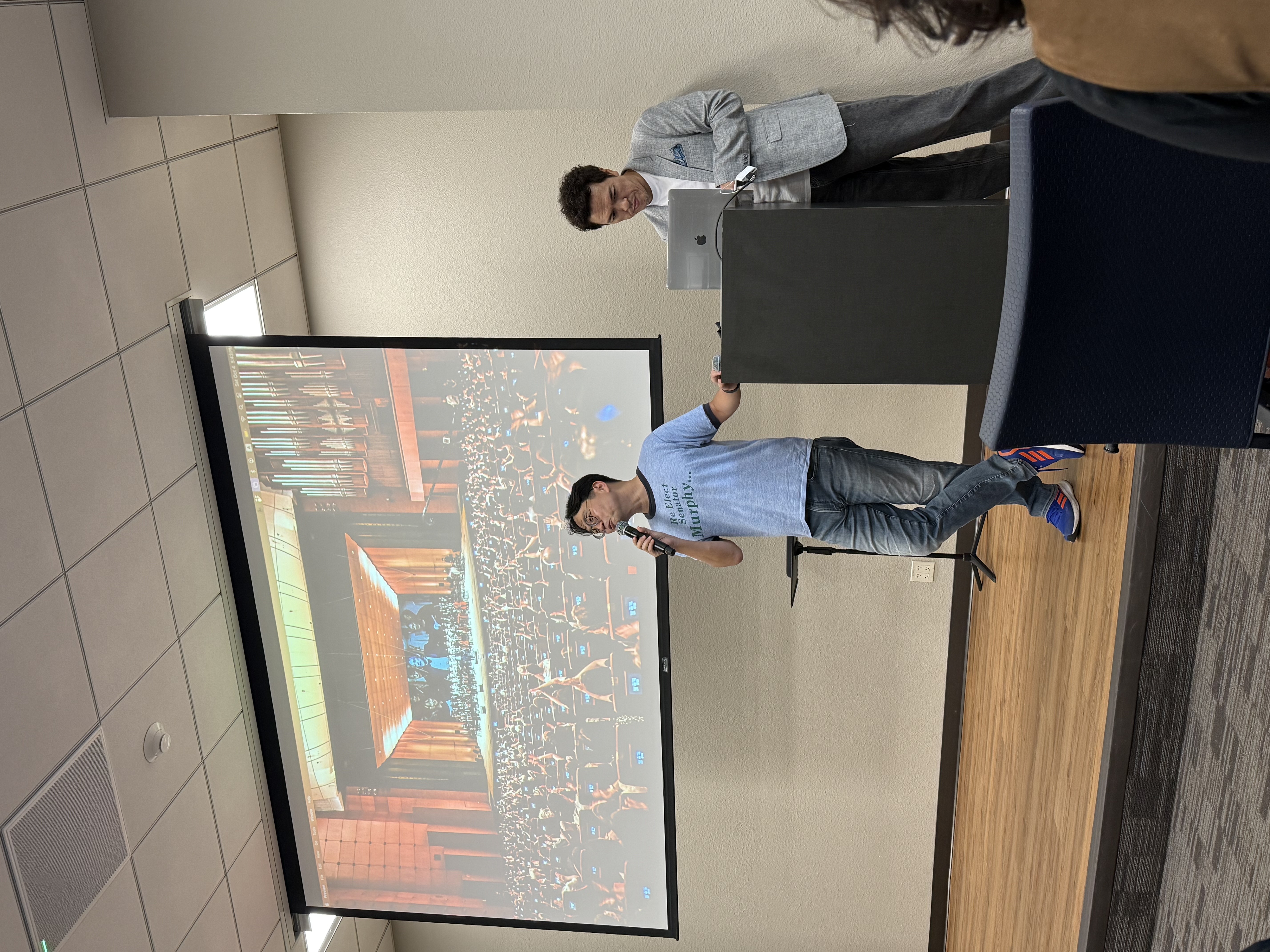
What I appreciate about Yoonhak’s journey is that he didn’t reject engineering to embrace music. He transformed his engineering mind into a musical instrument. The precision, the systematic thinking, the ability to see patterns and structures—these became tools for understanding and expressing beauty rather than obstacles to it.
This resonates deeply with my own journey. When I explored why AI cannot truly reason or delved into the inevitabilities underlying physical laws, I wasn’t abandoning technical rigor. I was using it to probe deeper questions about consciousness, meaning, and what makes us human.
The Mathematics of the Soul
Here’s what Yoonhak’s lecture ultimately demonstrated: mathematics and music aren’t separate domains that occasionally overlap. They’re different languages describing the same fundamental reality—the reality of pattern, relationship, and resonance.
When he explained that musical intervals correspond to simple integer ratios, he wasn’t reducing beauty to numbers. He was showing us that beauty has structure, that our aesthetic responses aren’t arbitrary but rooted in deep mathematical relationships that our minds (and bodies) recognize even when we can’t articulate why.
Consider the perfect fifth—that 3:2 frequency ratio. Every musical tradition on Earth recognizes this interval as consonant, as “right.” Why? Because our auditory system, shaped by millions of years of evolution in a universe governed by mathematical laws, has learned to recognize and appreciate the elegant simplicity of small integer ratios.
But then—and this is crucial—human creativity takes these mathematical building blocks and constructs cathedrals of meaning. Bach’s fugues, Mozart’s sonatas, Korean folk songs, jazz improvisations—all built from the same fundamental ratios, yet each expressing something unique about the human experience.
The Limits of Algorithmic Beauty
This understanding has profound implications for AI and music. Yes, AI can analyze harmonic progressions, generate statistically plausible compositions, even create music that many listeners find pleasing. But as I argued in my reflection on Bridging Technology and Humanity, AI cannot touch our souls precisely because it lacks the integrated understanding that Yoonhak demonstrated—the ability to feel the mathematics and analyze the feeling simultaneously.
Current AI systems process music as patterns in data. They don’t experience the resonance between mathematical structure and emotional meaning. They don’t understand why a shift from major to minor can evoke melancholy, why a suspended chord creates tension, why a resolution feels like coming home.
Songpyeon and Software Engineers
During the reception, watching Silicon Valley’s unique demographic—software engineers, biotech researchers, venture capitalists, students, families—sharing traditional Korean rice cakes while discussing harmonic series, I had a moment of profound gratitude.
This community we’ve built here, centered around institutions like Stanford, represents something historically unprecedented. Where else could you find such density of technical expertise combined with genuine openness to beauty, meaning, and cultural heritage?
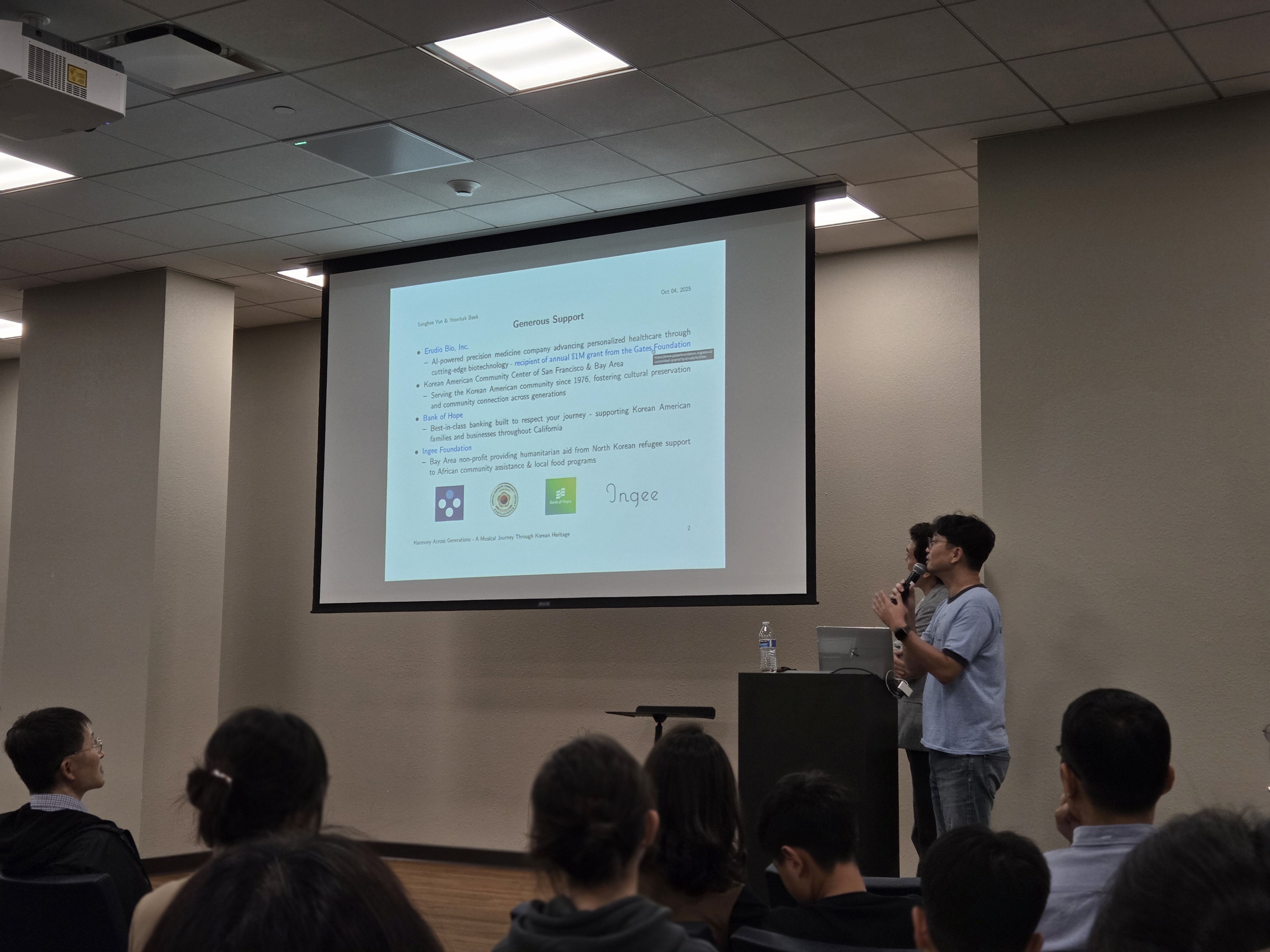
The sponsors who made this event possible—Erudio Bio (where I’m leading AI technology development), the Korean American Community Foundation, Bank of Hope, Ingee Foundation—represent this same integration. They understand that advancing biotechnology or financial services doesn’t preclude (indeed, it may require) engagement with arts, culture, and the deeper questions of human flourishing.
The Strategic Ignorance of Beauty
Reflecting on this event through the lens of my essay on strategic ignorance, I realize that musical experience requires a particular kind of letting go. We can analyze overtone series, study harmonic progressions, understand the mathematical structure—but to truly experience music, we must release our analytical grip and allow the beauty to wash over us.
This isn’t ignorance in the sense of lack of knowledge. It’s the wisdom to know when understanding enhances experience and when it interferes. Yoonhak masterfully navigated this balance, giving us enough mathematical framework to appreciate the structure while leaving space for pure aesthetic response.
What Saturday Night Meant
As the crowd slowly dispersed into the cool Stanford evening, I found myself thinking about what had just transpired. Yes, we had a lecture about music theory. Yes, we learned about harmonic series and tuning systems. But we experienced something more fundamental – the recognition that human beings are creatures who need both understanding and beauty, both analysis and transcendence.
The overwhelming response to this event—400 people wanting to attend, the engaged questions, the multi-generational presence—tells me something hopeful about our community. Despite all our technological sophistication, despite our analytical prowess, despite (or perhaps because of) our daily immersion in code and algorithms, we still hunger for experiences that integrate mind and heart, that connect us to our heritage while speaking universal truths, that remind us what it means to be fully human.
The Dancing Conductor’s Gift
Yoonhak’s nickname—the “Dancing Conductor”—captures something essential about his approach. Conducting isn’t just about keeping time or cuing entrances. It’s about embodying the music, about being a living conduit between the mathematical structure on the page and the emotional experience in the concert hall.
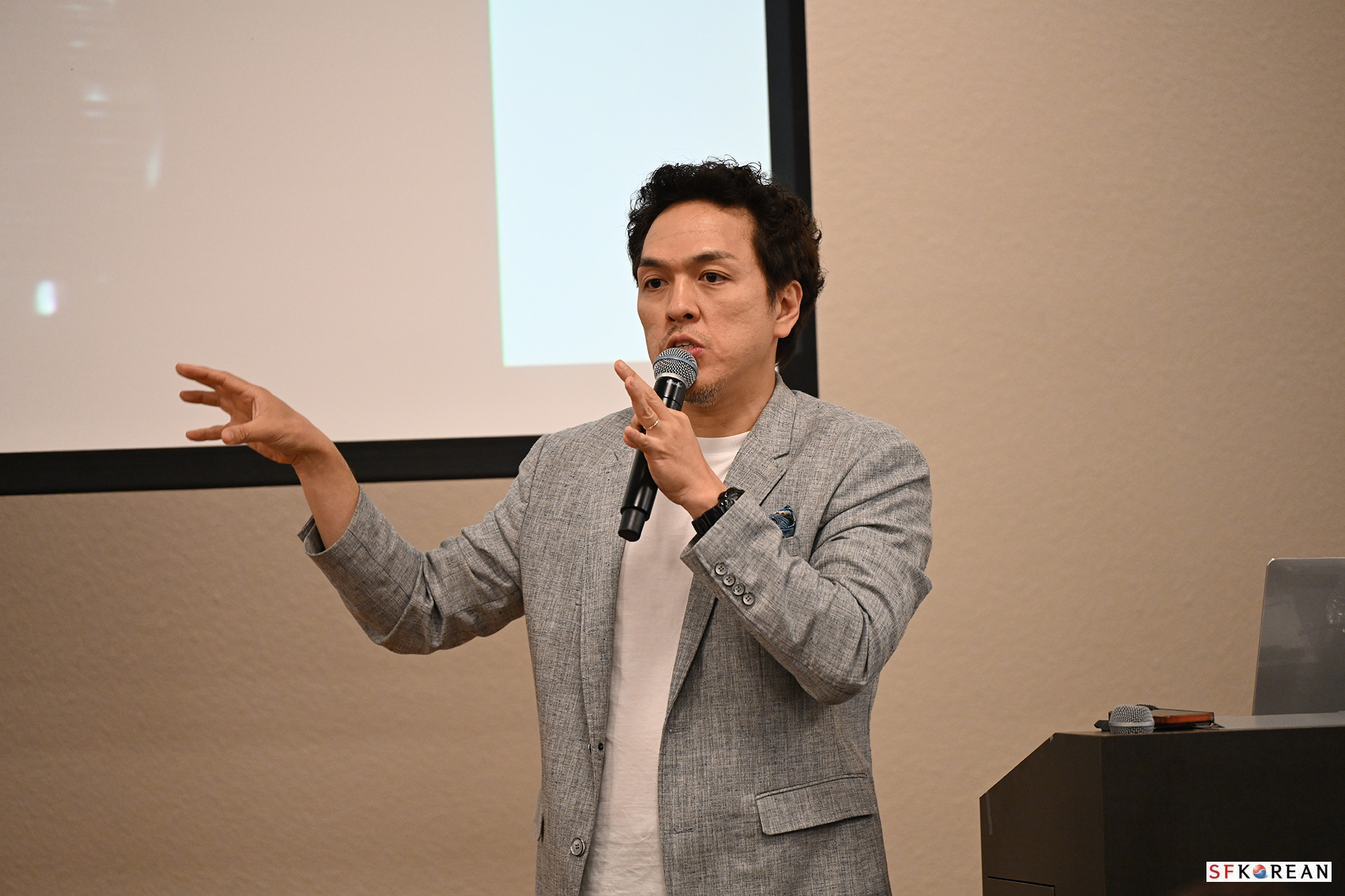
When he demonstrated conducting gestures during the lecture, I saw how this physical dimension integrates everything we discussed. The body becomes an instrument for translating mathematical ratios into lived experience, for transforming abstract frequency relationships into felt emotion.
This embodied understanding connects to what I explored in my essay on the dimensional paradox of music. Music isn’t just sound waves and frequency ratios. It’s those mathematical relationships experienced through consciousness—and not just any consciousness, but embodied consciousness that moves, breathes, and resonates with the patterns it perceives.
Looking Forward
As I left Stanford that evening, I couldn’t help but think about what such events mean for our future. We’re building technologies that will transform human experience in ways we can barely imagine. AI, biotechnology, quantum computing—these will reshape what it means to be human in the coming decades.
In this context, events like “Harmony Across Generations” aren’t mere cultural preservation or nostalgic retreats. They’re essential laboratories for understanding what we want to preserve and amplify as we build the future. They remind us that the goal of technology isn’t to replace human experience but to enhance our capacity for beauty, connection, and meaning.
The Next Generation
The children and students who attended Friday’s lecture will be the ones designing the AI systems, building the biotechnologies, and creating the institutions of tomorrow. What they learned from Yoonhak wasn’t just music theory—it was a model for integrated thinking, for honoring both precision and beauty, for maintaining connection to cultural roots while embracing universal truths.
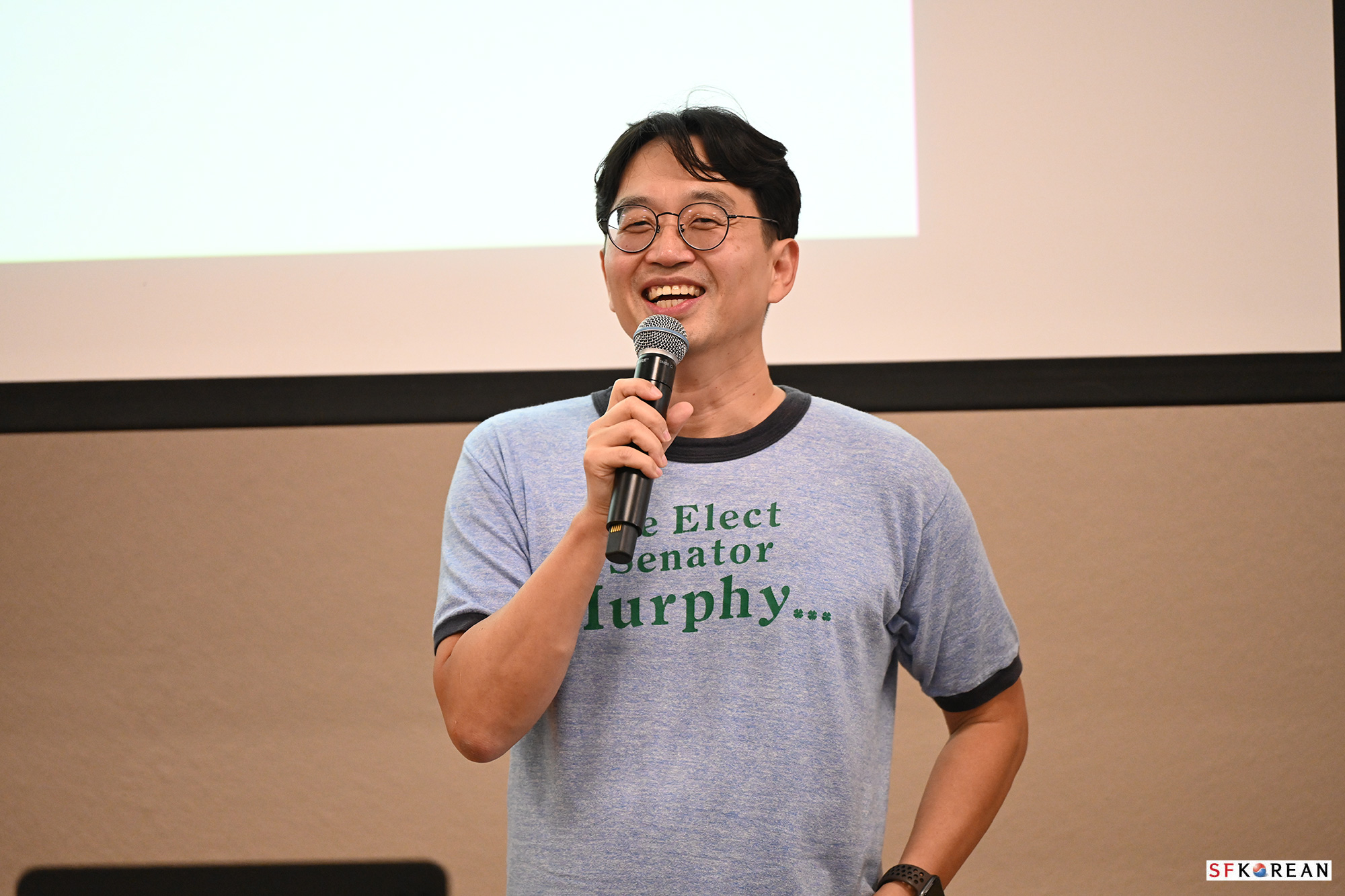
As someone now leading AI development in biotech, I find myself constantly returning to these fundamental questions: What makes us human? What do we want to preserve as technology advances? How do we build systems that enhance rather than diminish our humanity?
Yoonhak’s lecture offered one answer: We stay human by maintaining our capacity for integrated understanding—by refusing the false choice between analytical rigor and aesthetic response, by building bridges between technical precision and emotional depth, by recognizing that mathematics and meaning aren’t opposites but complementary ways of apprehending reality.
A Personal Coda
I want to close with a personal reflection. Sitting in that lecture hall, listening to my old friend from our Math Olympiad days explain the harmonic series to a rapt Silicon Valley audience, I experienced something like what Yoonhak must feel when conducting: a sense of disparate elements coming together in harmony.
My path from semiconductor optimization through AI development to philosophical inquiry about consciousness and meaning—it all felt somehow integrated in that moment. The mathematical precision I learned at Seoul Science High School, the engineering rigor from Seoul National University, the optimization theory from Stanford, the philosophical questioning that runs through my recent writing—all of it was present, resonating with Yoonhak’s demonstration that beauty has structure and structure can be beautiful.
This is what I hope for our community here in the Bay Area: that we continue creating spaces where technical excellence and humanistic inquiry reinforce rather than contradict each other, where we can discuss Fourier transforms and folk songs with equal sophistication, where the next generation learns that being smart means developing both the analytical mind and the receptive heart.
Thank you, Yoonhak, for reminding us why we do this work. Thank you to everyone who made this event possible. And thank you to the 120 who attended and the 280 who wanted to—your enthusiasm tells me that this integration of mathematics and meaning, technology and humanity, precision and beauty isn’t just my personal obsession. It’s a shared vision for the kind of future worth building.
This reflection emerges from an evening at Stanford on October 4, 2025, where my old friend Maestro Yoonhak Baek demonstrated that the distance between mathematics and music, between Seoul Science High School and the Curtis Institute, between engineering precision and artistic expression, is not as vast as we might think—provided we have the courage to walk the bridge.
Feedback from the Audience
A message from a friend of mine!
어제 행사 기획하는라 고생많았지? 울와이프가 아주 좋았다고 하더라고.. ( 내용을 조금 전해들었는데, 나도 재미있어서 관련 유투브 열심히 찾아보고 있음 ^^ 2^(1/12)가 이렇게나 특별한 수였다니..! )
너 덕분에 윤학이도 정말 오래만에 보고 ( 거의 30년만… ㅎㅎ)
여러 모로 바쁠텐데 이런 좋은 행사까지 기획하고.. 정말 대단함!! 그리고 땡스!!!
A Message from Prof. Jae H. Pyeon!
서울 페스타 필하모닉 오케스트라 지휘자 백윤학 교수의 스탠퍼드 강연을 다녀와서
“공학에서 음악으로: 열정이 이끄는 길”에 대한 감상
추석명절이 낀 주말에, 실리콘밸리를 방문한 영남대학교의 백윤학 교수가 “공학에서 음악으로: 열정이 이끄는 길” 이라는 주제로 스탠포드에서 강연을 진행했다.
가족 단위로 온 참석자들이 많았고, 대부분은 TV 프로그램 유 퀴즈 온 더 블럭에서 본 ‘춤추는 지휘자’ 백 교수의 인간적이고 따뜻한 이야기를 기대하고 온 듯했다. 그러나 실제 강연은 예상과 전혀 달랐다. 그의 무대는 대중적 토크가 아니라, “배음과 음계” 라는 심오한 주제로 진행된 하나의 지적 탐구였다. 공학을 전공한 나로서는 그의 강의가 오히려 더 흥미로웠다.
음악을 단순히 감성적 예술이 아니라, 물리적 진동과 수학적 비율이 빚어내는 조화의 과학으로 바라보는 새로운 관점을 얻을 수 있었기 때문이다. 강연 중 백 교수는 직접 피아노를 연주하며 배음 구조를 시각화하듯 설명했고, 번스타인(Leonard Bernstein) 이 배음(overtone)에 대해 열정적으로 설명하는 영상을 함께 보여주며, 음악이 단순한 소리가 아니라 자연의 수학적 질서와 인간의 감성적 인식이 만나는 지점임을 강조했다.
이어 고대 철학자 피타고라스(Pythagoras)가 “만물은 수로 이루어져 있다(All is number)”는 신념 아래 자연수의 비율로 음악의 조화를 해석하며 제안한 음계 체계로 이야기를 확장했다. 그의 강연은 마치 과학·수학·철학·음악이 하나의 언어로 융합되는 순간을 보여주는 듯했다. 그의 설명을 듣는 순간, 음악·수학·공학이 서로 다른 학문이 아니라 ‘하나의 언어’로 이어져 있음을 깨달았다.
흥미로웠던 점은, 강연 장소가 100명 정원으로 제한되어 400명 가까운 신청자 중 백 교수가 직접 사연을 읽고 100명을 선정했다는 점이다. 이는 단순한 강연이 아니라, 실리콘밸리 청중을 위한 ‘맞춤형 음악 철학 강의’였다는 인상을 받았다.
백 교수는 공학과 음악을 모두 전공했으며, 수학적 사고를 버리지 않고 오히려 그것을 음악 해석의 도구로 삼았다. 그는 “공학도가 음악을 위해 공학을 버린 것이 아니라, 오히려 좋아했던 수학과 공학이야 말로 음악의 길을 밝히는 등불이었다”고 말했다. 그의 해석 속에서 음악은 감정의 산물이 아니라 수학적 질서와 인간의 감성이 공명하는 ‘과학적 예술’로 새롭게 정의되었다.
강연 중 백 교수는 다음과 같은 비유를 들었다. “우리가 유재석의 사진을 보고 그를 인식하더라도, 그 이미지 자체가 유재석의 실체는 아닙니다.” 백 교수의 말은 단순히 이미지를 볼 때는 시각적 자극이 형상으로 남지만, 음악을 들을 때는 진동 그 자체가 형상을 가지지 않고 우리 몸에 파동으로 전달된다는 점을 강조한 것이다. 즉, 음악은 눈으로 보는 고정된 형태가 아니라, 몸을 통과하는 에너지의 흐름이며 그 진동이 청각적 자극을 넘어 뇌와 신경계 전체를 움직이는 신호로 작용한다는 말이었다. 실제로 음악을 들을 때 뇌에서는 도파민과 세로토닌 같은 신경전달물질이 분비되어 쾌감과 안정감을 느끼게 된다. 즉, 음악은 단순한 소리가 아니라 우리 몸의 세포에 전달되는 일종의 생체 신호라는 것이다. 그의 배음과 음계 강의는 바로 그 과학적·철학적 이해를 가능하게 해주었다.
무엇보다 인상 깊었던 것은, 백 교수가 ‘춤추는 지휘자’라는 별명에 걸맞게 단순히 음악을 해석하는 학자가 아니라, 음악을 통해 사람의 마음과 몸을 치유하려는 진정한 휴머니스트(Humanist) 였다는 점이다. 그는 “음악이 인간의 몸과 뇌의 진동을 조율해 스트레스를 낮추고, 삶의 균형과 감정의 안정감을 회복시킬 수 있다”고 말한다. 그의 지휘는 단순한 예술적 표현이 아니라, 인간의 본질과 휴매너티를 되살리는 행위였던 것 같다.
오늘날 대한민국은 경제적으로는 선진국이 되었지만, 사회적으로는 자살률이 높은 나라 중 하나로 남아 있다. 그 속에서 백 교수의 강의는 깊은 울림을 주었다. 그가 말하는 음악은 단지 아름다움을 표현하는 언어가 아니라, 인간다움을 회복시키는 사회적 처방이었다. 음악이 인류를 연결하듯, 우리 사회의 단절된 관계와 감정을 다시 엮어내는 힘 – 그것이 그가 말한 ‘공학에서 음악으로, 그리고 다시 인간으로’라는 여정의 진정한 의미였다.
이번 스탠포드 강연은 단순한 문화 행사 이상의 경험이었다. 수학적 사고와 인간적 감성이 공존할 수 있음을 증명한 강의, 그리고 음악이 인간의 본질을 회복시키는 휴매너티의 언어임을 일깨운 시간이었다.
